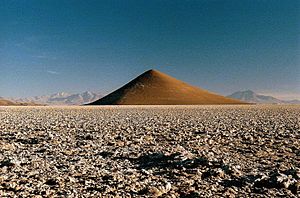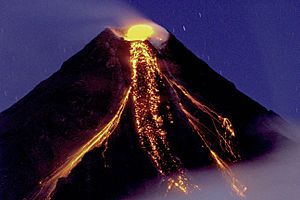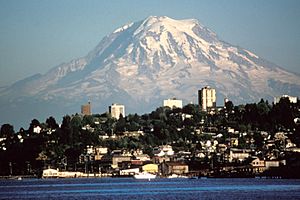Stratovolcano facts for kids
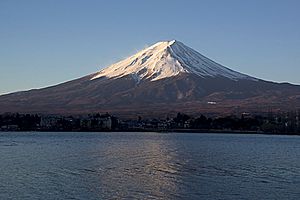
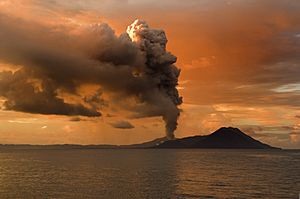
A stratovolcano is a tall, cone-shaped volcano. It is built up over time by many layers of hardened lava, rocks, and volcanic ash. Think of it like building a cake with many layers!
Unlike shield volcanoes, stratovolcanoes have very steep sides. They also have powerful and explosive eruptions from time to time. These volcanoes are often found where Earth's large plates meet. This is where one ocean plate slides under a land plate.
Contents
Volcano Hazards

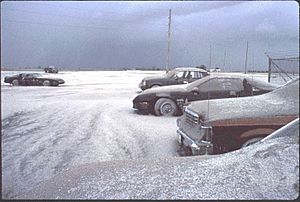
Volcanoes can be dangerous. The ash clouds from big eruptions can affect the climate. They also pose a serious risk to airplanes flying nearby.
Lava flows from stratovolcanoes are usually not a big danger to people or animals. This is because the lava is very thick and moves slowly. People can usually walk away from its path. However, lava flows can destroy buildings and property. Not all stratovolcanoes have thick lava. For example, Nyiragongo in Africa has very runny lava. This makes it much more dangerous.
Volcanic bombs are large pieces of rock shot out from the volcano. They can be as small as a book or as big as a car! These "bombs" are thrown out during the most powerful parts of an eruption. They can travel over 20 kilometers (12 miles) away from the volcano. They fly through the air at very high speeds. These bombs can cause a lot of damage to buildings and anything in their way.
Lahars are like fast-moving mudflows made of volcanic material and water. The word "lahar" comes from a Javanese term. Lahars usually form in two ways. They can be caused by heavy rainfall mixing with ash. Or, they can happen when hot lava melts snow and ice on the volcano. Lahars can be thick like wet concrete or soupy like floods. As they rush down the volcano's steep sides, they can flatten or bury everything in their path.
Famous Stratovolcanoes in North America
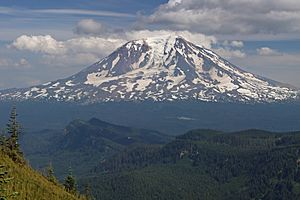
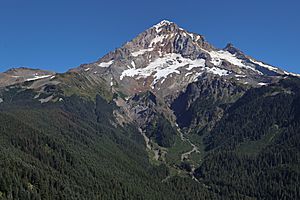
North America has many stratovolcanoes. Here are a few well-known ones:
Canada
- Mount Meager massif: This volcano had Canada's most recent major eruption about 2,400 years ago.
- The Black Tusk
Mexico
- Popocatépetl: This volcano is only about 70 kilometers (43 miles) southeast of Mexico City.
- Colima: This volcano is known as a Decade Volcano, meaning it is studied closely because of its history of big eruptions.
United States
Alaska
Washington
- Mount Rainier: This is also a Decade Volcano.
- Mount St. Helens: On May 18, 1980, it had a huge eruption. A massive landslide happened first, which made the volcano much shorter.
Oregon
California
Images for kids
-
Mount Vesuvius, near Naples, Italy, erupted violently in 79 AD. Its last eruption was in 1944.
-
The Mount Cayley volcanic complex in 2005.
See also
 In Spanish: Estratovolcán para niños
In Spanish: Estratovolcán para niños


